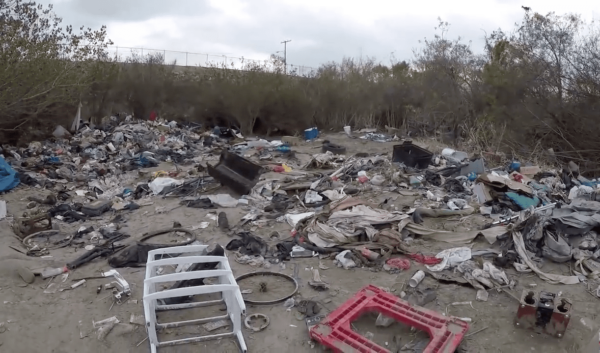 View Winners →
View Winners → Riverside Council bans homeless camps along Santa Ana River

An ordinance making homeless camps illegal along a large swath of the Santa Ana River bottom in Riverside was adopted Tuesday in a 6-1 vote of the Riverside City Council.
The ordinance, No. 9.04.600, had been reviewed and debated by the council on two previous occasions, with all but one member consistently in favor of the ban on encampments. Councilwoman Clarissa Cervantes cast the lone dissenting vote against it Tuesday afternoon at City Hall.
The ordinance, which takes effect on Nov. 4, declares that homeless camps or other temporary living facilities within space along the river bottom designated “wildland urban interface” are illegal.
Mayor Patricia Lock Dawson said in August that the ordinance “will help protect … residents who have seen their homes threatened by dozens of fires.”
The ordinance specifies that “sitting, lying, sleeping” or maintaining habitable space along or in the river bottom within city limits is prohibited.
The new regulations permit police, fire, code enforcement and other municipal officials to dismantle transient camps and place items belonging to homeless individuals in storage facilities. No civil penalties are established under the ordinance, which recognizes that the city will provide resources, including temporary shelter, to those impacted.
The regulatory apparatus will only be enforceable within the Riverside segments of the river bottom, spanning an east-west stretch from Highgrove to Norco, not impacting the Jurupa Valley segments.
“While many … unsheltered persons experiencing homelessness live in urban centers, a growing number have taken refuge in the Santa Ana River bottom or more remote canyon areas,” according to the measure. “As more people, both housed and unsheltered, live within high fire zones, the risk of fires starting and causing harm and loss of life has also increased.”
The ordinance will be taking effect roughly the same time work begins on an upgraded levee network in the river bottom.
The Riverside County Flood Control & Water Conservation District announced at the end of August that crews will be initiating a four-year project to fortify levees to mitigate flood hazards between Jurupa Valley and Riverside. The $36 million project will require removing transient camps in the construction zone on the Jurupa Valley side of the river bottom.
Both sides of the channel will now, effectively, be off limits to transients, though camps are known to be abandoned and reestablished on a reoccurring basis year-round.
Last fall, the city counted 39 homeless encampments along segments of the river bottom within municipal boundaries, according to officials.
Two-thirds of the brush fires that crews battled in the river bottom between the first half of 2017 and the first half of 2022 were human-caused, according to data collected by the Riverside Fire Department.
Blazes routinely erupt due to cooking, warming and debris fires in transient camps. Properties have been damaged, along with public infrastructure, and residents have been placed under evacuation orders on numerous occasions.
According to the city, the Ninth Circuit Court of Appeals has affirmed the authority of municipalities to enact time, place and manner restrictions that prohibit sleeping or loitering for extended periods in public spaces, as long as alternative dwelling arrangements are available.
The “wildland urban interface” designation establishes guidelines for mitigating fire risks where housing density reaches a certain level amid natural vegetation.
Cervantes lodged her opposing vote after expressing concern for those who may be uprooted.
The city’s Office of Homeless Solutions is slated to provide assistance with coordinating alternate living arrangements for transients who are impacted.






































































































